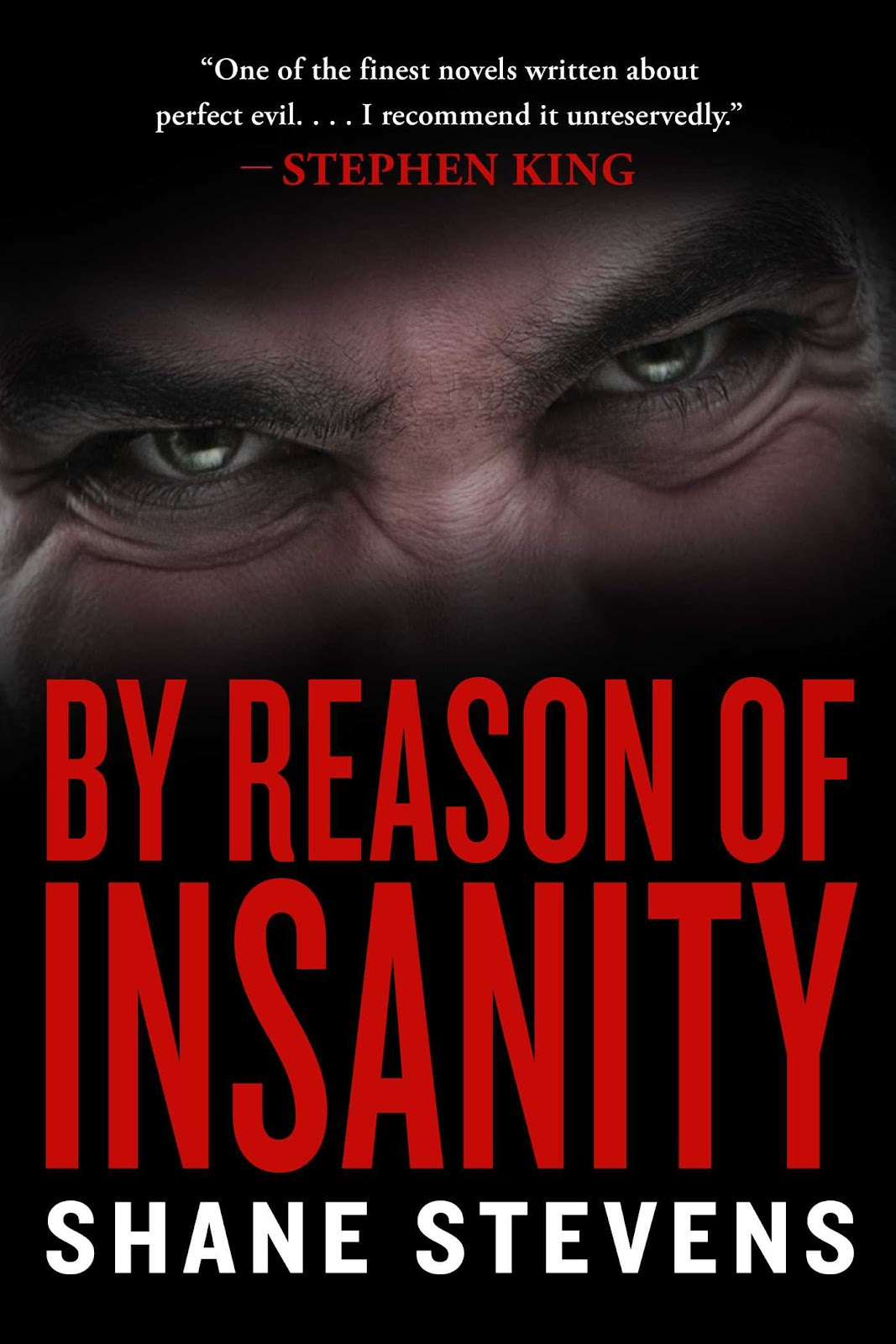Readers unfamiliar with By Reason of Insanity may prefer to read these notes only after reading the novel.
Homer had brought down the remainder of the Caryl Chessman material as well, including the four books Chessman had written. He let it be known that he felt himself to be a qualified expert on the subject, having read everything. With Chessman, Senator Stoner, the maniacal killer, and sundry other areas of interest in and out of the company, it seemed to Homer that they were working on quite a few different stories at the same time.
Suppose they were all connected, Kenton had said.
What if they were all one story?
By Reason of Insanity (1979) by Shane Stevens is an effective recreation of the United States of fifty years ago. Before Thomas Harris, before TV's "Mindhunter." Before their myriad true crime, film, and TV melodrama imitators.
In the United States in 1974, how do you hunt a serial killer? There are no networked command centers from which feds can call shots: the local cops and journalists tracking woman-killer Thomas Bishop do so by the seat of their pants: persistent kibitzing, physically digging into archives and neighbor's attics, and exploiting that state of the art communication medium, the WATS line.
1974. The United States government and media are only coordinated in their desire to use events like the Manson Family and the Zodiac killings to mobilize support for cops and a reconsecration of the death penalty. But the U.S. defeat in Vietnam and the Cointelpro-Watergate scandals have permanently altered mass psychology, shattering whatever cold war allegiance there once was in bourgeois government institutions.
There are many ways to read By Reason of Insanity: Suspense thriller, misogynist phantasmagoria, repetition of the Freudian theory of the death drive. Stevens offers evidence to support any lens we might choose. Fundamentally, By Reason of Insanity allegorizes most aspects of the dictatorship of the U.S. bourgeoisie of the period.
An imperialist state can mother monsters from its monstrous self.
* * *
By Reason of Insanity opens with the real-life execution of Caryl Chessman in 1960. The story then backtracks to 1947, introducing Sara Bishop, a young woman who believes her lover's lane rapist was Chessman.
In 1973, Sara's son Thomas Bishop escapes from the mental institution where he has been incarcerated since age ten. He embarks on a cross-country killing spree, leaving a trail of mutilated women in his wake. He assumes multiple identities, having become an expert in creating false IDs, credit cards, and driver's licenses by studying the steps on TV as he grew up. While institutionalized, he was never photographed or finger-printed.
Bishop revels in becoming an anti-woman specter haunting North America. Adam Kenton, a muckraking reporter at Newstime magazine, is assigned by his bosses to trump the cops and unmask Bishop, who taunts the magazine and other media with Jack the Ripper-style letters. Stevens does not shy away from the details of Bishop's crimes.
By Reason of Insanity alternates chapters between Kenton, his bosses, interested politicians, Bishop, and the law enforcement officers on his trail. The novel is saturated in a mood of mounting dread.
* * *
Thomas Bishop’s motivations are a tangled web of childhood trauma, mental illness, and a twisted sense of justice. His nemesis, Adam Kenton, serves as counterpoint: he represents the journalist's relentless drive to thwart – or at least scandalize – the nation's rulers: for him, hunting Bishop is an interesting one-off.
* * *
By Reason of Insanity can be analyzed as a reflection of the social and historical anxieties of its time. The novel's monster can be read as embodying the fears and anxieties of a class-divided society in political turmoil at the moment the mass proletarian Black rights movement and the growing feminist movement have altered political consciousness.
In his own view of his life and mission, Bishop is both anti-woman zealot and flâneur: moving through society, disrupting its norms and exposing its vulnerabilities. A figure of abjection, he consciously acts-out the rage of the abused, marginalized, and demented.
* * *
The character of Thomas Bishop in By Reason of Insanity aligns with Freud's concept of the death drive in several ways. The most striking is Bishop's compulsive reenactment of his mother's murder, aligning with the Freudian idea of repetition compulsion, where individuals repeat events in an attempt to master them. Bishop's destructiveness further reflect the death drive's outward manifestation as aggression. Moreover, Bishop's actions can be interpreted as an unconscious desire to regress to a state before his mother's traumatic death, echoing Freud's notion that the death drive seeks a return to an earlier, inanimate state.
* * *
The anti-woman violence, both physical and psychological, that permeates By Reason of Insanity is a stark reminder of misogyny’s role in the evolution of class society. Bishop's choice of serial rapist Caryl Chessman to serve as his Nobodaddy underscores this fact.
By Reason of Insanity is a stark portrait of high and low U.S. life and death. Violent and unflinching, its pity and poignancy linger.
* * *
Further reading:
http://www.toughcrime.com/2019/12/like-shadows-in-condemned-building-my.html?m=1
https://toomuchhorrorfiction.blogspot.com/2020/05/by-reason-of-insanity-by-shane-stevens.html?m=1
Jay
28 August 2024




